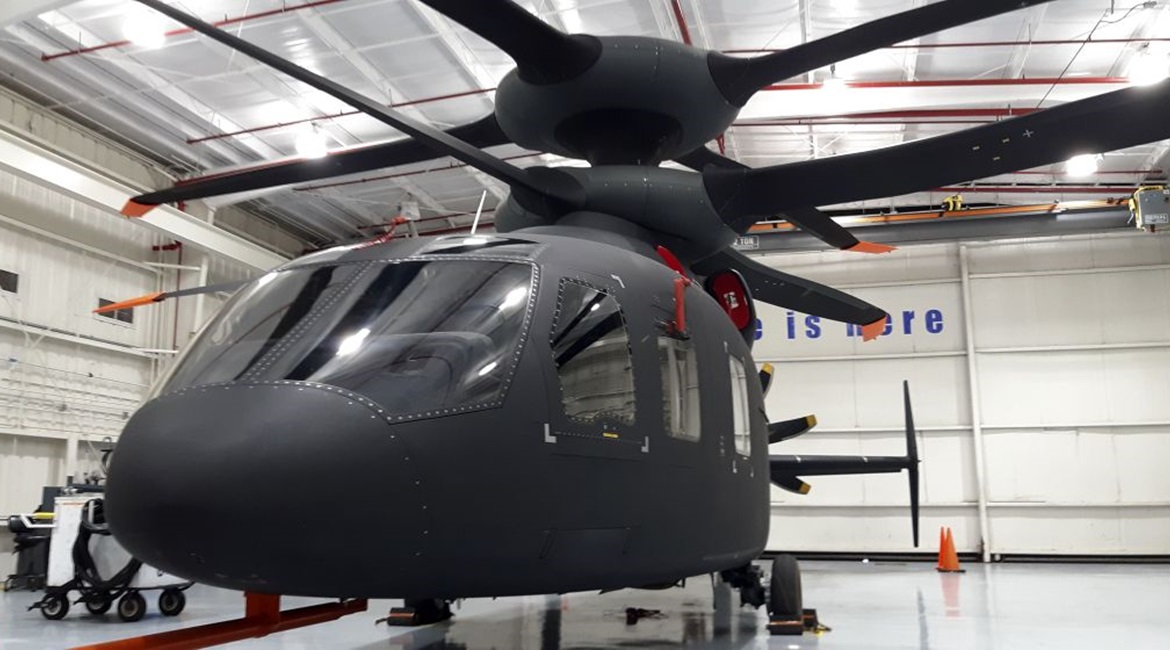
The next phase of the US Army’s Future Long Range Assault Aircraft (FLRAA) programme will feature the service contributing two-thirds of the funding, a greater share of the costs than in previous phases.
In this new study phase, contractors will better learn US Army requirements for the FLRAA aircraft through tasks such as a system requirements review (SRR) and a system functional review (SFR). Bell will start laying the groundwork for turning its V-280 Valor tiltrotor, which it developed under the US Army’s Joint Multi-Role Technology Demonstrator (JMR-TD) effort, into an aircraft ready for combat.
The Bell V-280 Valor tiltrotor cabin. Contractors in the next FLRAA stage will better learn US Army requirements to refine their technology demonstrator aircraft into real weapon systems. (Jane’s/Pat Host)
US Army spokesperson Sarah Tate said on 19 March that the cost sharing for JMR-TD varied across the four vendors who participated, but that the average cost sharing ratio was 3-to-1, industry to government. Keith Flail, Bell vice president for vertical lift systems, told Jane’s on 18 March that the company is very comfortable with this new cost share arrangement where industry contributes one-third of the funding.
Flail said that Bell, in this next FLRAA phase, will show the service trade space opportunities such as what the company can do if the US Army wants a specific capability. Bell, he said, could put more fuel in the V-280’s wings or it could put fuel overhead above the fuselage if the US Army wanted greater fuel capacity. Items that could go on the V-280 as it becomes a combat-capable aircraft could be survivability pieces such as inlet barrier features and infrared (IR) suppressors, he added.

Looking to read the full article?
Gain unlimited access to Janes news and more...






